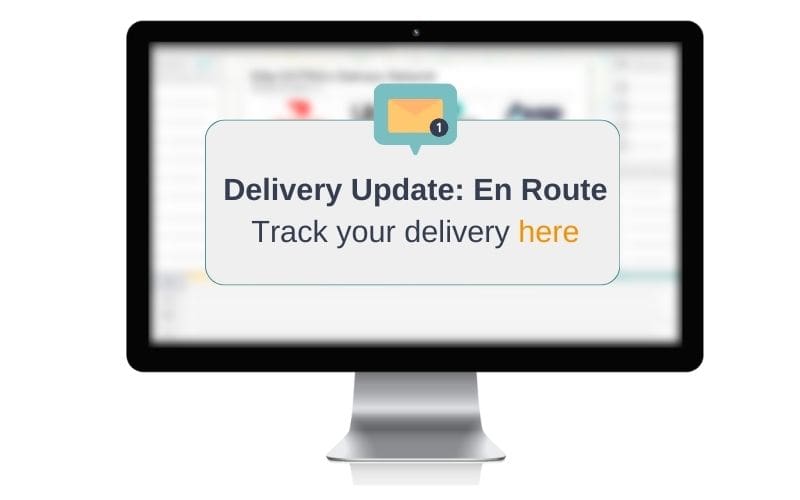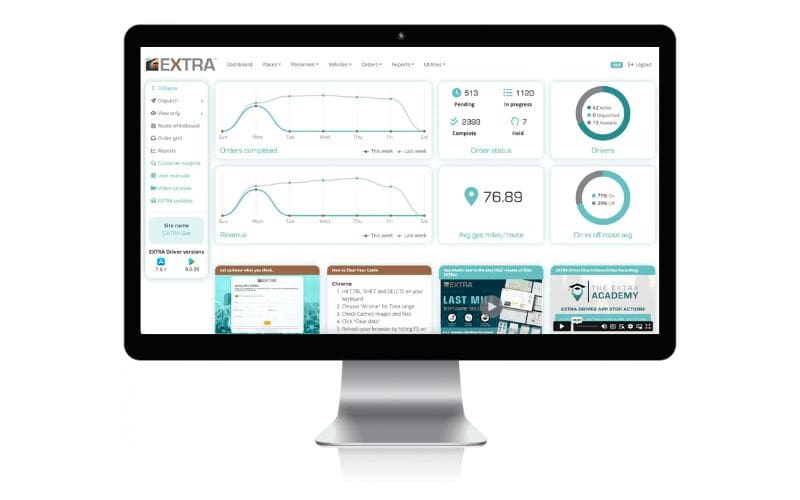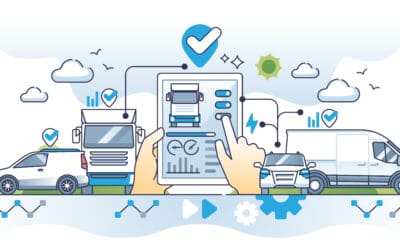
As you know, the consequences of an inefficient supply chain can be far-reaching. It often translates to financial challenges, loss of customers, and reputational damage. But on the other hand, if you can get it right, you’ll dominate the market. This is where last-mile distribution comes into play.
This is the final leg of a product’s journey to reach its ultimate destination, whether it be the customer’s doorstep or a retailer’s. It plays a vital role in business success as it ensures the efficient transportation of goods from distribution centers to end-users.
With the rise of eCommerce, increasing competition, and higher customer expectations, your ability to get products to clients on time goes beyond necessity; it’s a strategic imperative. According to data, 48% of consumers will stop purchasing from you if you have poor delivery performance.
While there are numerous challenges with navigating last-mile delivery, overcoming them can give you a significant competitive advantage. This is why it’s important to understand how last-mile delivery impacts customer satisfaction and the strategies for efficient final-leg distribution.
So, keep reading to discover how you can master the final delivery stretch and elevate your business to new heights.
Understanding the Last-Mile Challenge
Despite accounting for the shortest distance, the last mile is arguably the most complex stage of the delivery. Unfortunately, it is also the most expensive delivery stage, accounting for 53% of shipping costs. This is why strategic navigation is essential to overcome the unique challenges of this final stretch.
Some of the key factors that characterize the last-mile challenge include:
- Time Sensitivity: Consumers expect goods to be delivered in record time, even as quick as the same day. While you may want to meet these expectations, factors such as labor, fuel, routes, vehicle maintenance, and traffic can impact success.
- Need for Precision: Successful deliveries hinge on accurate addresses, optimal routing, and synchronized coordination. Any deviation from precision can lead to delays and operational inefficiencies, affecting both cost-effectiveness and customer satisfaction.
- Customer Satisfaction: In the age of rapid eCommerce growth, customers expect not just timely deliveries but a seamless and positive experience from click to receipt. Efficient last-mile distribution directly translates into satisfied customers, forming a symbiotic relationship between operational excellence and positive feedback.
Strategies for Last-Mile Distribution
As mentioned, last-mile logistics come with numerous challenges. However, you can turn these obstacles into a competitive advantage with a tactical approach.
Here are some of the top strategies for streamlining last-mile distribution:
1. Route Optimization and Efficient Delivery Planning
At any given moment, delivery drivers have numerous packages that must be delivered. While some may be closely located, it is more common to have the deliveries spread out throughout different regions. Trying to manually manage all of these can be a nightmare, with delivery delays and mishaps at every corner.
This is where route optimization comes into play. Powered by advanced technology, route optimization helps you optimize delivery routes based on various rules, customer preferences, and above all, fastest delivery time. By analyzing various factors in real time, such as historical data, traffic patterns, delivery windows, and geographical nuances, businesses are able to minimize their delivery times while reducing fuel consumption.
Also, efficient delivery planning extends beyond optimized routes. It involves strategic scheduling to ensure that delivery resources are allocated effectively. You can leverage technology to match delivery resources with demand, avoiding overloading and underutilization. This meticulous planning enhances overall efficiency and contributes to significant cost reduction.

2. Technology Solutions for Real-Time Tracking and Communication
In the dynamic landscape of last-mile distribution, real-time tracking and communication are indispensable. Innovations such as GPS tracking, RFID technology, and advanced telematics give you unprecedented visibility into your operations. These technologies enable accurate monitoring of deliveries, ensuring that businesses and customers alike are informed about the shipment’s status in real time.
Effective communication is equally crucial. Mobile apps, SMS notifications, and automated alerts facilitate seamless communication between drivers, dispatchers, and customers. Real-time communication enhances transparency and allows for proactive problem-solving, reducing the likelihood of delivery issues and enhancing customer satisfaction.
3. Integration of Local Distribution Centers for Proximity Advantages
To conquer the last mile, businesses strategically place their pawns closer to the endgame by creating local distribution centers. Establishing regional hubs enhances proximity to customers, ensuring faster access to critical items. This approach drastically reduces transit times, contributing to the overall efficiency of the supply chain.
Strategically located distribution centers serve as key players in the chessboard of last-mile logistics. By reducing the distance traveled for each delivery, you can achieve substantial gains in efficiency and cost-effectiveness. This approach aligns with the decentralization trend, emphasizing the importance of localized operations for swift and responsive last-mile delivery.
In summary, these strategies – route optimization, technology solutions, and the integration of local distribution centers – form a trifecta that empowers you to master the intricacies of last-mile distribution.
Importance of Customer Experience
Today’s consumer-driven market is characterized by choice. As such, customers expect much more than high-quality products and services. Ultimately, it’s only by offering positive experiences and interactions that you can get customers to keep coming back.
This is why close to 90% of organizations now prioritize customer experience in their contact centers. With this in mind, here are some things you can do to enhance customer experience with your last-mile distribution.
1. Offer Flexible Time Windows
Acknowledging the diverse schedules of modern consumers, businesses are redefining the delivery time paradigm. The traditional narrow time slots are giving way to flexible time windows that accommodate the varied routines of customers. This shift recognizes that convenience is as crucial as delivering packages on time.
Implementing flexible time windows requires synchronization between you and your customers. Leverage advanced scheduling systems to allow customers to choose delivery slots that align with their availability. This not only enhances customer satisfaction but also reduces the chances of missed deliveries, contributing to overall operational efficiency.
2. Provide Options for In-Person or Contactless Deliveries
The evolution of customer preferences is prompting the need for diverse delivery options, striking a delicate balance between personalization and safety considerations. Beyond in-person deliveries, consider embracing a contactless approach as well.
In-person deliveries, with their personalized touch, cater to customers who value face-to-face interactions. On the other hand, the rise of contactless deliveries, accelerated by global events, prioritizes safety and minimal physical contact. Successful implementation of these options hinges on giving customers the autonomy to choose their preferred mode, adapting to their comfort levels.
Companies like DoorDash in the food delivery sector are a perfect example of the effectiveness of this approach. It has seamlessly integrated contactless delivery options into its services. This flexibility not only meets the diverse needs of customers but also positions businesses as responsive and adaptable in dynamic market landscapes.
3. Implementing User-Friendly Tracking Interfaces for Customers

When it comes to customer satisfaction, transparency is a critical component. Customers will be more reassured if they know what’s going on and where their package is.
You can achieve this by implementing user-friendly tracking interfaces. These solutions add a layer of clarity and control, empowering customers with real-time insights into the status of their deliveries.
With an intuitive interface, customers will have easy access to information about their shipments. If you combine this with visual maps, delivery timelines, and push notifications, you’ll create a seamless tracking experience.
Prime examples of companies that leverage intuitive tracking interfaces are Uber and Lyft, and they have set the standard in the transportation industry with apps that offer real-time tracking of rides. By applying a similar principle to last-mile logistics, you can enhance customer trust and satisfaction through transparent and user-friendly tracking interfaces.
Addressing Regulatory Challenges
As the wheels of last-mile distribution turn, they often encounter regulatory speed bumps that can significantly impact the smooth flow of operations. Therefore, navigating local regulations and ensuring compliance is essential in the intricate dance of last-mile logistics.
Navigating Local Regulations and Compliance
The diversity of local regulations poses a formidable challenge in the seamless execution of last-mile distribution. Different regions, jurisdictions, and even municipalities may have distinct rules governing aspects such as delivery hours, vehicle types, and environmental considerations.
Understanding and adhering to these regulations is imperative for avoiding legal entanglements and ensuring the sustained operation of last-mile logistics.
Overview of Common Regulatory Challenges in Different Regions
The landscape of regulatory challenges varies across different regions. In urban environments, restrictions on delivery hours and noise levels may be stringent to minimize disruptions to residents.
In contrast, rural areas may have challenges such as longer distances and limited infrastructure. You’ll need to devise effective strategies that align with local regulations depending on your area of operation.
Strategies for Overcoming Legal and Regulatory Obstacles
Effectively navigating the complex legal and regulatory challenges landscape in last-mile distribution demands proactive strategies. These include:

- Establish Clear Communication Channels: Foster open lines of communication with local authorities and develop collaborative relationships. This will give you access to valuable insights into specific regulatory requirements. Moreover, maintaining ongoing dialogue will ensure mutual understanding, facilitating smoother operations.
- Leverage Technology for Real-Time Tracking and Reporting: Real-time tracking and reporting systems enhance compliance, while automation tools offer accurate data, demonstrating adherence to regulations.
- Learning From Successful Case Studies: Studying success stories of industry leaders will provide valuable insights. Moreover, analyzing how these companies navigated international customs regulations will help you develop effective strategies.
By adopting these strategies, you can proactively address legal and regulatory obstacles, fostering a regulatory-compliant last-mile distribution network.
Peering into the Crystal Ball: Future Trends in Last-Mile Distribution
In recent years, last-mile delivery has come a long way. From being a premium service, it’s now the bare minimum expectation. But as technology advances and market dynamics shift, expect even more changes to come.
Therefore, monitoring trends and adjusting to them early on is vital to stay ahead of your competitors.
Anticipated Development and Advancements
The future of last-mile logistics holds promise for several key developments. From integrating autonomous vehicles and drones to expanding sustainable and eco-friendly delivery options, the industry is poised for transformative changes.
You should also expect advancements in route optimization algorithms and the incorporation of artificial intelligence to enhance operational efficiency.
Predictions for Future Trends in Last-Mile Logistics
As you monitor the trends, it’s also good to find out what industry experts make of them and their suggestions. One of the prevailing predictions, thanks to the continued growth of eCommerce, is a shift towards hyper-localized delivery solutions.
The need for improved real-time visibility and communication will trigger a rise in innovative last-mile fulfillment models. As such, you can expect the boundaries of what’s possible to continue being pushed further.
Dive deeper into the world of last-mile logistics by downloading our latest white papers for free!
Unraveling Reverse Logistics
Discover the challenges and opportunities that companies face with their reverse logistics operations with this industry white paper.
Writing Effective Consumer Satisfaction Surveys
Discover how writing effective consumer satisfaction surveys can improve customer satisfaction and drive your delivery business.
Preparing for the Evolving Landscape of Last-Mile Distribution
As the last-mile distribution landscape evolves, you must proactively adapt to stay ahead of the curve. Preparing for this dynamic environment involves strategic considerations and forward-thinking initiatives:
Investment in Advanced Technologies: Allocate resources for adopting cutting-edge technologies like AI, machine learning, and automation. This should be accompanied by continuous monitoring of technological advancements, ensuring timely integration of innovations into last-mile operations.
- Adopt Sustainable and Eco-Friendly Practices: Incorporating sustainable practices, such as electric vehicles and eco-friendly packaging, aligns with the growing demand for environmentally responsible solutions. Along with positioning you as a socially accountable entity, it will help you appeal to the increasing eco-conscious consumers.
- Embrace Flexible Operational Models: Developing adaptable operational models allows you to respond swiftly to changing market dynamics. As such, you can easily accommodate shifts in consumer behavior, regulatory changes, and emerging trends without disrupting core operations.
- Collaborative Partnerships and Shared Services: Explore collaborative partnerships with other businesses in the industry to foster shared resources and efficient last-mile solutions. By establishing networks for shared services, including distribution centers and delivery fleets, you will enhance operational efficiency and reduce costs.
- Invest in Employee Training and Skill Development: Have a system for continuous employee training to equip them with the skills necessary for evolving job roles and emerging technologies.
- Data-Driven Decision-Making: Harnessing the power of data analytics to understand customer preferences, optimize routes, and predict demand patterns enhances overall operational efficiency.
Navigating the Last Stretch with Elite EXTRA
Last-mile distribution is not just about getting products to clients; it’s about doing so on time while delivering top-notch customer service. With this approach, you can transform it into an asset that sets your business apart.
However, that’s easier said than done. You also need to balance the need for efficiency with high costs and overcome key logistical challenges that threaten operational efficiency. In this regard, Elite EXTRA is your ideal solution.
Our tailored products help streamline last-mile distribution from route optimization to returns automation. So, reach out to us today to discover how Elite EXTRA can help you conquer last-mile distribution.
Sources
https://www.scmr.com/article/navigating-the-new-customer-in-the-supply-chain-landscape
https://www.business.att.com/learn/articles/ how-supply-chain-inefficiencies-are-stealing-your-profits
https://www.scandit.com/resources/guides/ the-last-mile-paradox-balancing-satisfaction-scaling-and-spend/
https://www.superoffice.com/blog/customer-experience-statistics/
https://www.globalpsa.com/navigating-the-final-stretch-trends-and-complexities-of-last-mile-delivery/
https://marketbusinessnews.com/behind-closed-doors-the-intriguing-world-of-last-mile-delivery/343620/









